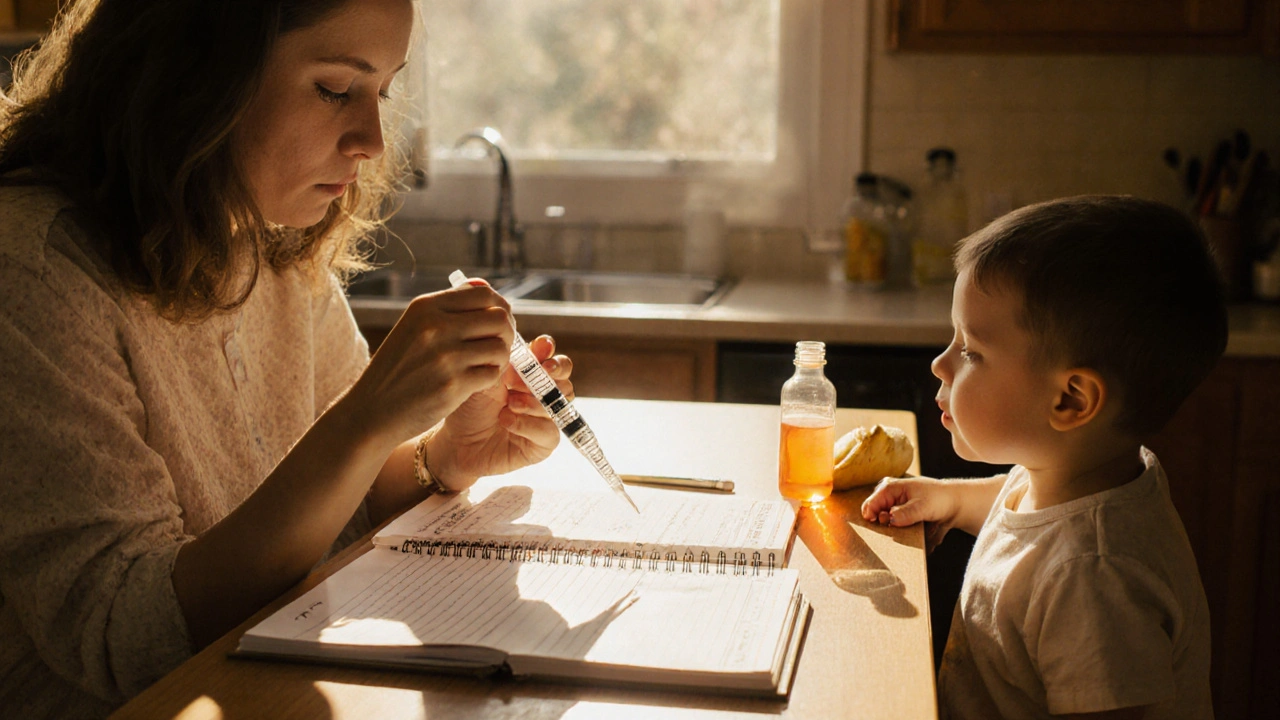Managing Kids' Drug Reactions: What Parents Need to Know
When a child has an unexpected reaction to a medication, it’s one of the most frightening moments a parent can face. Managing kids' drug reactions, the process of identifying, responding to, and preventing adverse responses to medications in children. Also known as pediatric adverse drug reactions, it requires quick thinking, clear communication with doctors, and a solid understanding of how children’s bodies process drugs differently than adults. Unlike adults, kids aren’t just small versions of grown-ups—their liver and kidneys are still developing, their weight changes fast, and their brains react uniquely to certain chemicals. A dose that’s safe for a teen might be dangerous for a toddler. That’s why tracking reactions isn’t optional—it’s essential.
One of the biggest risks comes from drug interactions, when two or more medications affect each other’s behavior in the body. For example, giving an antihistamine for allergies alongside a cough syrup with sedatives can make a child dangerously sleepy. Or, using common OTC pain relievers like ibuprofen with certain antibiotics can stress the kidneys. These aren’t rare mistakes—they happen daily because parents assume "it’s just a cold medicine" or "it’s safe because it’s over the counter." Pediatric drug side effects, unwanted physical or behavioral responses to medications in children. Also known as children’s medication adverse effects, they range from mild rashes and upset stomachs to seizures, breathing trouble, or liver damage. And many go unreported because parents don’t realize it’s the drug’s fault. The good news? Most reactions are preventable. Keeping a written list of every medication your child takes—including vitamins, herbal drops, or topical creams—and sharing it with every doctor, even the pediatrician, cuts risk dramatically. Also, never assume a drug is safe just because it worked for another child. Genetics, weight, and allergies vary too much.
When a reaction happens, act fast but stay calm. Note the time the medicine was given, what symptoms appeared, and how fast they started. Take a photo of any rash or swelling. Call your pediatrician immediately—not the pharmacy, not a website, not a Facebook group. If your child is struggling to breathe, turning blue, or losing consciousness, call emergency services. Don’t wait to see if it gets better. Many life-threatening reactions, like anaphylaxis or serotonin syndrome, start subtly and escalate fast. And always, always tell your doctor about every supplement or herbal remedy your child uses. Things like echinacea, melatonin, or chamomile tea aren’t harmless—they can interfere with antibiotics, seizure meds, or even heart drugs.
The posts below give you real, practical help. You’ll find clear advice on how to spot dangerous interactions between common drugs, what to do if your child overdoses on a fever reducer, how to tell if a rash is an allergy or just a side effect, and which OTC medicines are safest for kids under five. You’ll also learn how to talk to pharmacists and doctors so you get the right answers—not just the quick ones. This isn’t theory. These are the exact situations real parents have faced, and how they got through them safely.

How to Manage Pediatric Medication Side Effects at Home
Learn how to recognize and manage common pediatric medication side effects at home, from vomiting and rashes to dosing errors and storage safety. Know when to call the doctor-and when to act fast.
view more